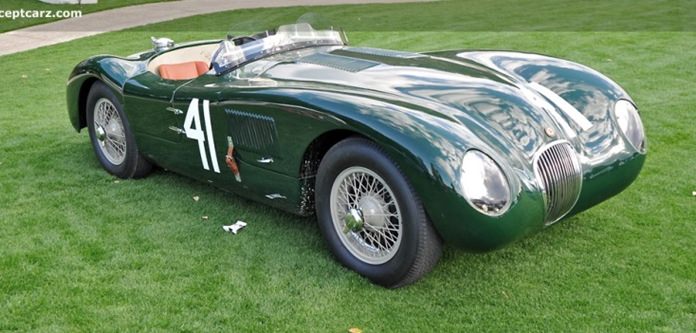
For those who need reminding, the Jaguar C-type (officially designated the Jaguar XK120-C) was a racing car built by Jaguar and sold from 1951 to 1953. With an aerodynamic body designed by Malcolm Sayer and a lightweight, multi-tubular, triangulated frame designed by Bob Knight, a total of 52 were built. (No wonder there is a thriving market amongst enthusiasts worldwide for replicas of exceptional quality.)
Mechanically, the C Type used the running gear of the contemporary XK120 sports car (the C stands for ‘competition’). The twin-cam, six cylinder engine was tuned to around 153kW rather than the 134kW of the road car. The custom, tubular chassis and aluminum body-panels, along with the elimination of creature-comforts, helped the car to shed nearly 454kg compared to a comparable Jaguar road car. The later C-Types were more powerful, using triple twin-choke Weber carburetors and high-lift camshafts. They were also lighter and better braked, by means of all-round disc brakes.
The Jaguar C-Type won the Le Mans 24 hours race at its first attempt in 1951, driven by Peter Walker and Peter Whitehead and in so doing, became the first car to win a major race using disc brakes.
In 1952 Jaguar, worried by reports of the speed of the Mercedes-Benz 300SL, modified the aerodynamics to increase the top speed. However, this necessitated a rearrangement of the car’s cooling system, and subsequently all three entries retired due to overheating. In 1953, the car won again, in a lightened, more powerful configuration, driven by Duncan Hamilton and Tony Rolt. This victory marked the first time the race had been won at an average of over 100 mph (105.85 mph – 170.34 km/h, to be precise).
I remember those halcyon days when the Border Rievers team raced their C-Type Jaguars at the Charterhall circuit. Included in the team were a certain J. Clark and J. Stewart, as well as Ninian Sanderson and Duncan Hamilton.
 |
 |





